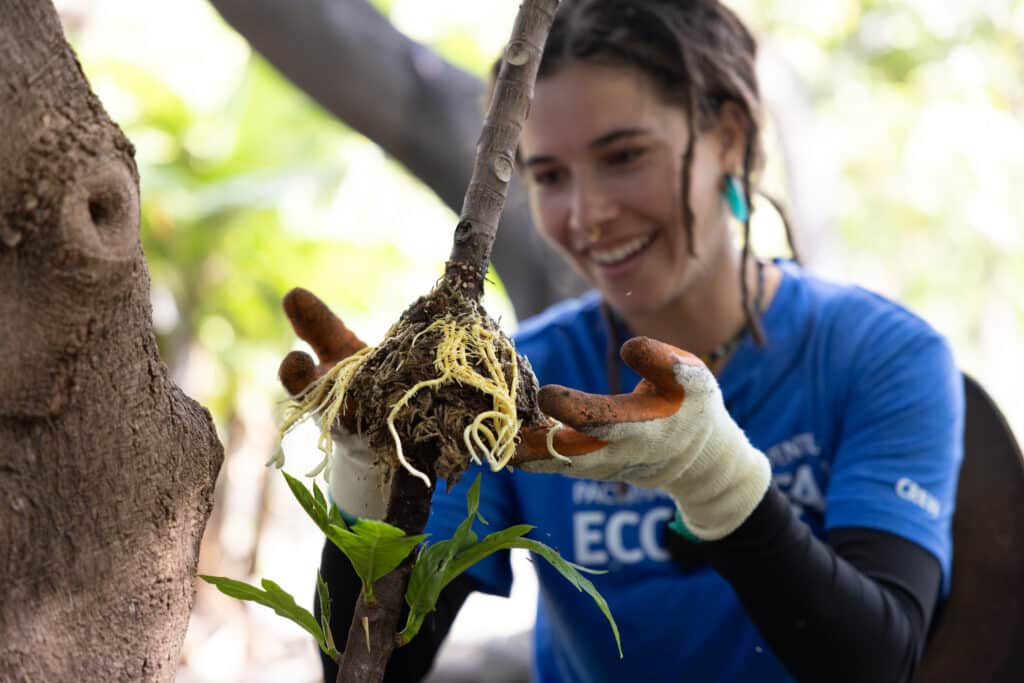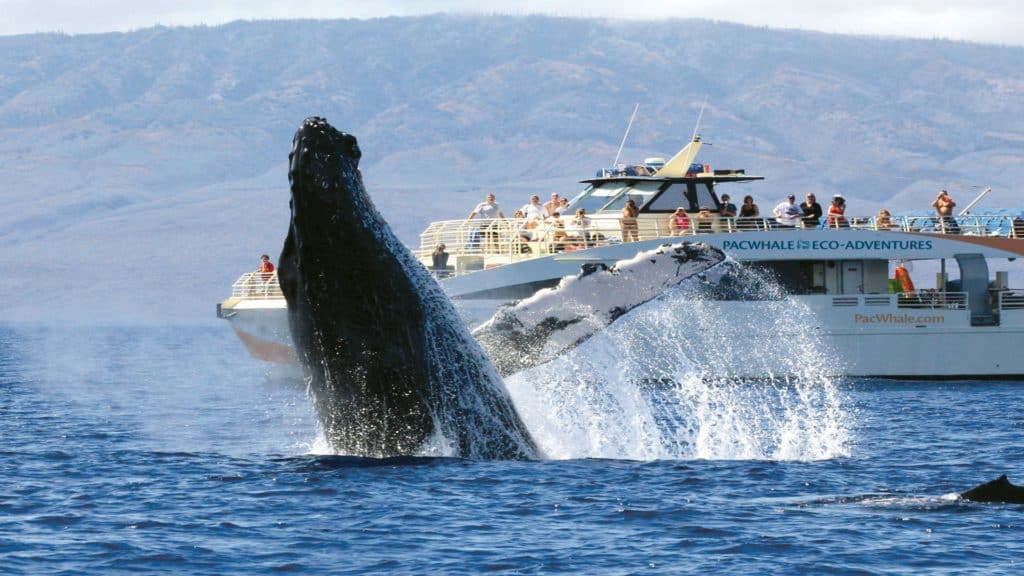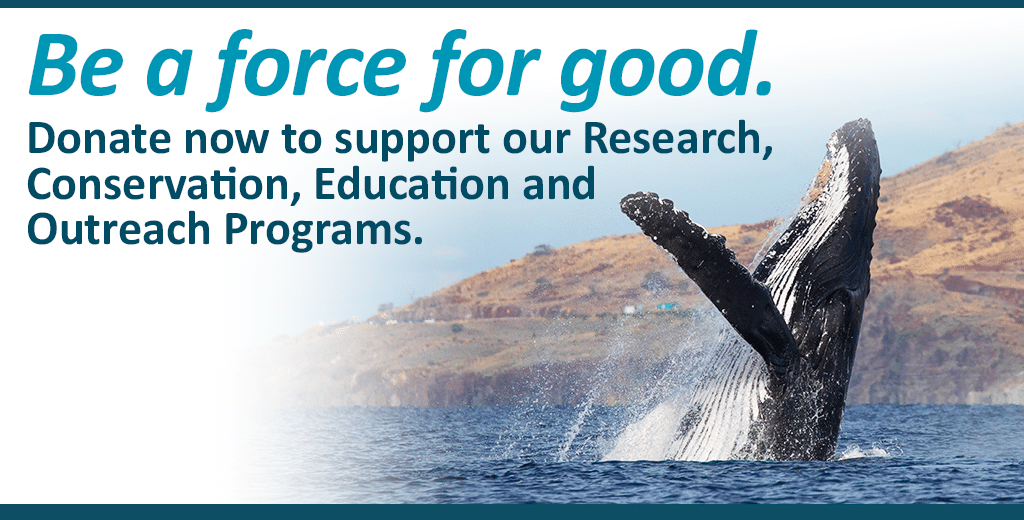We wrap up our #DeepDive series’ focus on the threat of bycatch and other fisheries interactions on marine mammals, such as whales, dolphins and false killer whales, with an overview of what we’ve learned over the last few months plus tips on how your choices as a consumer can help mitigate bycatch dangers to ocean life moving forward.
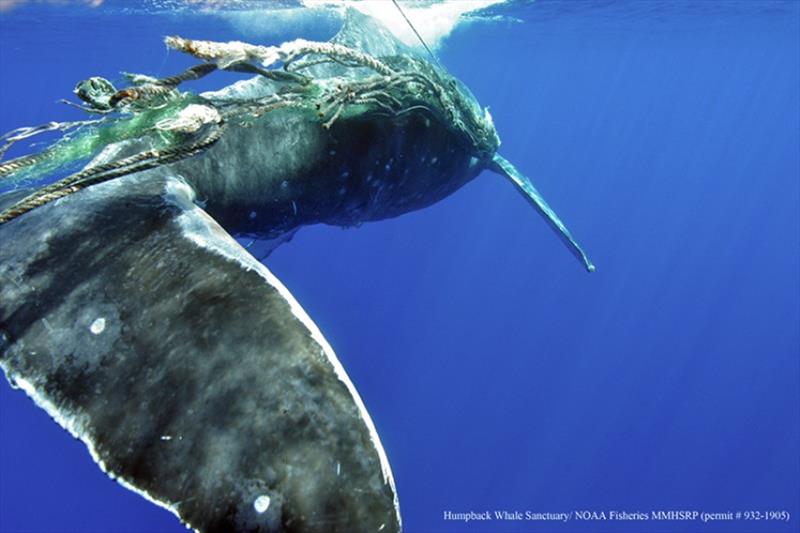
We know that much of the world relies on seafood as a primary protein source. More than 3.3 billion people around the globe depend on seafood to provide at least 20% of their animal protein intake, according to the United Nations Food and Agriculture Organization. With increased world population and optimization of commercial fishing strategies, many species hunted for seafood are at risk due to overfishing and other questionable practices. Of primary concern for Pacific Whale Foundation (PWF) and other marine conservation organizations, institutions and groups is the impact large-scale fishing operations have on marine mammal populations.
Bycatch, the incidental catch of non-targeted species resulting in mortality or series injury, is among the most prolific and harmful repercussions of unchecked fishing practices. In 2005, The U.S. Ocean Commission identified incidental catch by fisheries as the “biggest threat to marine mammals worldwide … killing hundreds of thousands of them each year.”
Examples of bycatch and other fisheries interactions with marine mammals include becoming entangled or entrapped in active fishing gear or “ghost gear” (discarded abandoned or lost fishing gear) and the presence of marine mammals in FADs, the acronym for fish aggregating devices that generally consist of artificial floating structures designed to attract and aggregate target fish such as tuna or mahi mahi.
The International Whaling Commission (IWC) is the global body charged with the conservation of whales and the management of whaling. Due to the impacts that commercial fishing can have on whales, the IWC recognizes bycatch as a serious threat to cetaceans citing an estimated 300,000 cetaceans caught in this manner every year.
With little waning of the globe’s appetite for seafood, there is a need to restructure the commercial fishing industry so that it is both economically viable for the people it employs and sustainable for the health of the ocean.
The globalization of seafood makes it possible for people to find seafood from almost anywhere, in almost any developed country, with the United States as the largest seafood importer valued at $21.6 billion. The U.S. also ranks high on global exports, ranking fifth in the world. However, at present, this global trading is not without consequence to cetaceans.
United States fisheries abide by some of the world’s most robust conservation practices, including measures to reduce marine mammal bycatch. However, seafood consumed in this country is primarily imported from international fisheries. To ensure that the nearly 90% of imported seafood consumed in the U.S. comes from fisheries that aim to mitigate the bycatch of whales and dolphins, the National Oceanic and Atmospheric Administration (NOAA) has established international marine mammal bycatch criteria for U.S. imports. For more detailed information on how PWF and conservation partners, such as NOAA, are working to reduce the high incidences of marine mammal bycatch, revisit our blog series, Making Waves: Policies to Protect the Ocean.
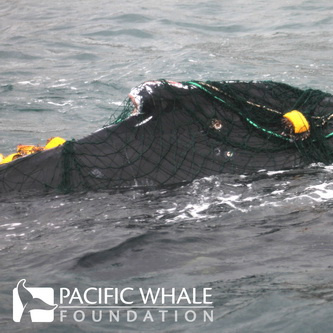
YOUR CHOICES MATTER
One way we, as individual consumers, can help shape a more sustainable and environmentally friendly approach to large-scale fishing is by being knowledgeable about the seafood we order in restaurants or purchase at the market. For example, more than half of all tuna caught is harvested using purse seine nets, which are large nets that both contribute to overfishing and run the risk of incidental catch (bycatch) of non-targeted species. Consider eliminating or reducing tuna consumption, or choosing tuna labeled as 100% pole-and-line caught, and you’re already on your way to being sustainable consumer.
In addition, the Marine Stewardship Council provides recommendations of fish harvested with attention to marine-mammal population health through its sustainable seafood certification, a designation PWF fully supports. As one of the world’s leading certification programs, MSC does not endorse Hawaiian longline fisheries, a position that directly aligns with PWF’s organizational values.
Particularly concerned with the danger longline fishing — a commercial fishing technique employing long lines with baited hooks attached at intervals that significantly threaten a wide variety of marine life from birds to mammals — presents to the endangered population of false killer whales, a species of dolphin, we strongly encourage that those who wish to be part of the solution purchase store-bought seafood affixed with the MSC blue label.
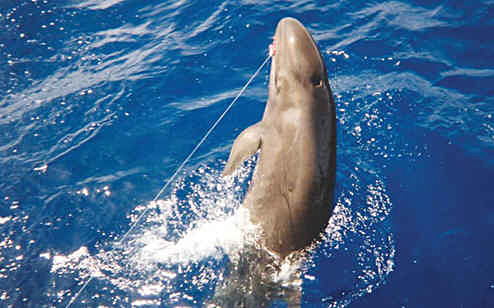
Particularly concerned with the danger longline fishing — a commercial fishing technique employing long lines with baited hooks attached at intervals that significantly threaten a wide variety of marine life from birds to mammals — presents to the endangered population of false killer whales, a species of dolphin, we strongly encourage that those who wish to be part of the solution purchase store-bought seafood affixed with the MSC blue label.
False killer whale caught on fishing line
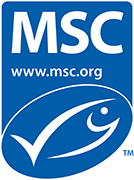
The “dolphin-safe” MSC label represents a strenuous certification process carried out by expert assessment. Compliant fisheries expend considerable effort and time — years often — refining their practices in order to achieve the MSC “dolphin-safe” label. In fact, fisheries certified to the MSC standard must provide evidence that they are actively minimizing unwanted catch to avoid possible suspension of certification. There are numerous positive examples of MSC-certified fisheries introducing innovations to protect marine life, such as modifying gear type to decrease turtle bycatch or adding LED lights to increase the selectivity of catch and reduce the chance of incidental catch of non-targeted species.
This same level of attention applies to seafood purchased while dining out. It’s not only acceptable but strongly encouraged that, as a conscientious consumer, you expressly inquire where a particular restaurant, food truck or other meal provider sources their seafood. This allows consumers to make informed decisions about what they’re eating while also alerting dining establishments that consumers care about where and how animal protein is obtained and harvested, thereby influencing change over time as supply responds to demand for sustainably caught seafood.
Beyond adopting and practicing responsible consumerism, educating yourself on these issues and sharing what you have learned with the people in your life has life-saving potential for our oceans and inhabitants. PWF will continue to work in tandem with your efforts to ensure the effective implementation of the Import Provisions set forth by NOAA Fisheries. These critical provisions aim to reduce marine mammal bycatch associated with commercial fishing operations by requiring foreign fisheries who export to the U.S. to have standards comparable to the United States, which set the standard for sustainable fisheries for the rest of the world.
Whether it’s being a more savvy, smarter, environmentally conscientious shopper, initiating sometimes difficult yet potentially ocean-affirming conversations with friends and family, voting and advocating for positive change, or supporting organizations like PWF, you have the power to revolutionize the seafood industry by demanding that commercial fisheries worldwide revise these harmful practices and help mitigate the impacts to whales, dolphins, seabirds, turtles and other precious marine wildlife.
APPLY YOUR KNOWLEDGE
Now that you know more about sustainable seafood, follow along with us in this responsible recipe for fish tacos!
